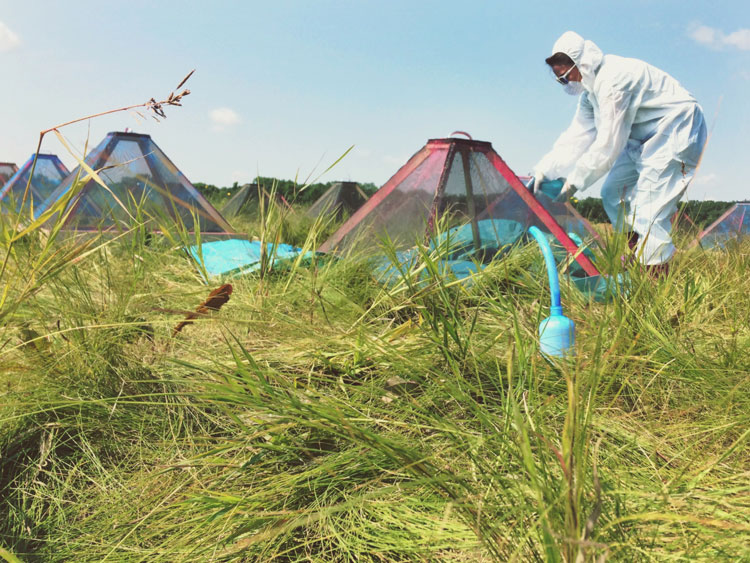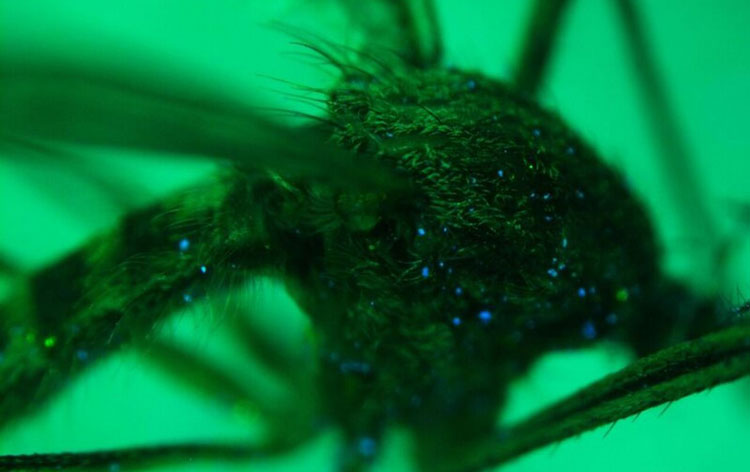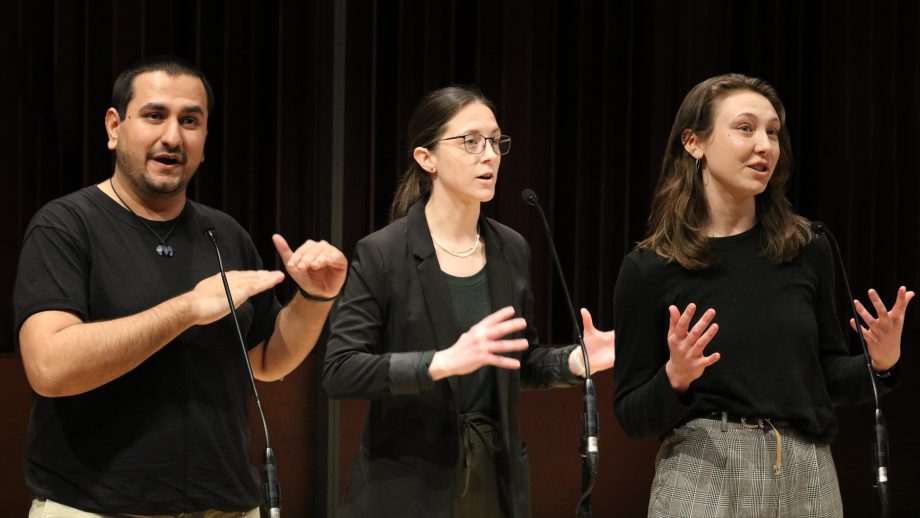
Martine Balcaen. ©UWinnipeg
Winnipeg’s longstanding fight against mosquitoes has found a new ally in a UWinnipeg graduate student.
Martine Balcaen, a second-year student in the Master of Science in Bioscience, Technology and Public Policy program, has teamed up with the City of Winnipeg for her thesis to study mosquitoes and map their spatial dispersal patterns — in other words, where they head to once they’re fully grown. While the city currently uses trap counts to determine a fogging schedule, that data paints an incomplete picture of mosquito population in a given area.
“The association of a trap count with a region doesn’t reflect anything about that region in terms of landscape characteristics,” says Balcaen, who moved to Winnipeg from her hometown of Calgary to pursue the study. “In short, it is not telling us the reasons that trap counts may be high there. No analysis is done on these beyond ‘There are lots of mosquitoes here this year, we should fog or treat this region of the city first.’ When we treat an entire region based on point data from one location within that region, we may be wasting resources.”
Ken Nawolsky, Winnipeg’s superintendent of insect control, says understanding mosquito movement is critical to improving the city’s control program.
“Despite implementing a comprehensive larval and adult mosquito control program, City of Winnipeg insect control staff feel that possible movement of adult mosquitoes from rural untreated areas adjacent to the city into urban residential areas may occur during years with large mosquito outbreak events,” he says. “Movement of these mosquito populations may increase the presence of nuisance or disease-carrying female mosquitoes within the city and lessen the overall effectiveness of the mosquito control program.”

Marking mosquitoes with fluorescent spray. Photo provided.
To track the mosquitoes, Balcaen set up pyramid-shaped breeding cages south of St. Norbert. After counting the mosquitoes present, Balcaen sprayed fluorescent dust over the cage to mark them. The mosquitoes were then released and later captured and counted at traps within a four-kilometre radius of the breeding site.
“[Martine’s] data has also shown that generally adult mosquitoes will stay within about five kilometres from where they emerged as adults,” says Nawolsky. “This reinforces that strategy that if there is a local outbreak in adult mosquitoes, the source may not be too far away.”
After two seasons of data collection, Balcaen has found mosquitoes have a tendency to head to areas with “green infrastructure,” including wetlands, rivers, forests, and farms with livestock. Although existing research into mosquito physiology offers reasons for these areas being heavily populated — such as moisture levels, and availability of hosts, food, and breeding sites — Balcaen says more study of her own data, as well as historical data, is necessary before coming to a definitive answer.
“At this point it’s not clear whether there’s just generally a problem with mosquitoes in those areas — are larva being produced and growing up near rivers — or is there something about those areas that mosquitoes are flocking towards and that’s why we should focus on those.”

Up-close look at a marked mosquito. Photo provided.
Balcaen’s not alone in her pursuit. Similar studies around the world — including one currently being conducted by NASA in the southern United States — are working towards a mapping model that could be applied to any location facing mosquito issues. The impact of such a model could be big — as a carrier of diseases like malaria, Zika virus, and West Nile virus, mosquitoes pose one of the greatest animal threats to human life.
Ultimately, Balcaen hopes to provide the city with data to inform their control efforts, and a strategy that is less about preventing mosquito breeding than it is about understanding their relationship to different landscapes to better target them.
“What I’m looking at is an end-of-pipe solution, so we’re acknowledging the fact that we can’t get rid of all the breeding sites,” she says. “So what my project is looking at is if we do have to spray, we can spray the areas where we can hit them the hardest.”
Graduate Studies Research Week 2018
April 3 – 6 is Graduate Studies Research Week at The University of Winnipeg. Join students and faculty as they share the groundbreaking, multidisciplinary research taking place on campus, and demonstrate the value of graduate education at UWinnipeg. Click here for more info and a list of events.
Media contact
Adam Campbell
Communications Officer, The University of Winnipeg
ad.campbell@uwinnipeg.ca
204-988-7671




